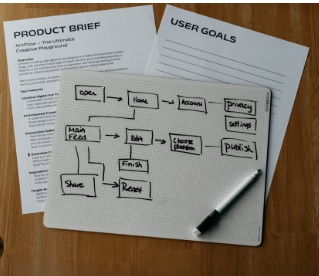Raising children is a journey filled with small victories and learning moments. Among these, teaching healthy habits early in life sets the stage for a lifetime of well-being. While structured routines and guidance play a role, combining these lessons with creative play can make the experience more engaging and natural for young minds. Creative play is not just fun; it is an essential tool for teaching children habits that nurture both body and mind.
From the moment children wake up, their curiosity and energy are at their peak. Encouraging them to begin the day with positive actions can be both enjoyable and instructive. For example, turning morning hygiene routines into a playful activity can help children remember important habits such as brushing teeth, washing hands, and tidying their spaces. Parents can create simple games where children earn imaginary “health stars” for completing each task. By associating these routines with creative play, children develop consistency while enjoying the process.
Nutrition is another cornerstone of early healthy habits. Introducing children to a variety of foods through creative activities can spark their interest in balanced meals. Simple cooking projects like making colorful fruit kabobs or designing their own sandwiches allow children to explore textures, flavors, and colors. Through these activities, they not only learn about nutrition but also develop fine motor skills and a sense of accomplishment. By making mealtime an interactive and playful experience, children are more likely to develop a positive relationship with healthy foods.
Physical activity is vital for growth, coordination, and overall health. Creative play can transform exercise into an adventure rather than a chore. Outdoor activities such as scavenger hunts, obstacle courses, or nature walks with imaginative storytelling can keep children moving while stimulating their imagination. Even indoor spaces can become arenas for active play, with simple dance sessions or pretend adventures that encourage stretching, balancing, and jumping. When physical activity is framed as playful exploration, children are more motivated to move their bodies regularly, building habits that support long-term fitness.
Sleep is often overlooked in discussions about healthy habits, yet it is fundamental to a child’s development. Introducing a bedtime routine that incorporates creative elements can make winding down more appealing. Storytelling, puppet shows, or quiet drawing sessions before sleep help children transition from active play to restful relaxation. Establishing a predictable yet playful bedtime ritual teaches children the importance of adequate sleep while reinforcing emotional security. Creative play in this context not only fosters a healthy habit but also strengthens parent-child bonding.
Another critical aspect of early childhood development is emotional health. Creative play offers a safe space for children to express feelings, manage stress, and build empathy. Role-playing games, art projects, and imaginative storytelling allow children to explore different emotions and perspectives. Through these activities, children learn how to handle frustration, celebrate success, and interact positively with others. Developing emotional awareness through playful experiences lays the foundation for healthy communication skills and resilience in the years to come.
Social habits are equally important. Children benefit from learning cooperation, sharing, and respect for others through group play. Activities that require teamwork, turn-taking, and collaborative problem-solving teach valuable social skills while keeping play enjoyable. By framing social interactions as part of games or creative projects, children naturally practice kindness, patience, and listening. These early lessons help children form positive relationships and contribute to a supportive community environment as they grow.
Personal responsibility is another habit that can be cultivated through creative play. Simple tasks like organizing toys, watering plants, or caring for a pet can be turned into imaginative missions or storytelling adventures. When children see these tasks as part of a game, they are more likely to engage willingly and consistently. This approach reinforces the idea that taking care of oneself and one’s environment is both rewarding and enjoyable. Over time, children internalize these behaviors as part of their daily routine.
Creativity itself is a habit worth nurturing. Encouraging children to explore art, music, building, and imaginative storytelling strengthens their problem-solving skills, innovation, and self-expression. Incorporating creativity into daily habits makes learning more dynamic and engaging. For example, a child might invent a new bedtime song to remember handwashing steps or create a colorful chart to track healthy snacks. By blending creativity with practical habits, children learn that wellness can be integrated into all aspects of life.
Parental involvement is key to the success of teaching healthy habits through creative play. Children observe and imitate adults, so modeling positive behaviors is essential. Engaging in playful activities alongside children reinforces lessons, strengthens bonds, and provides opportunities for shared enjoyment. Rather than imposing rules, parents can guide children through imaginative experiences, encouraging exploration while subtly introducing important routines and values. This approach fosters autonomy and confidence, as children feel empowered to practice habits independently while knowing support is nearby.
Consistency and patience are fundamental. Habits take time to form, and young children benefit from repetition and gentle encouragement. Creative play offers a flexible way to reinforce routines without pressure or stress. For instance, a child may gradually learn to tidy up after playtime if the activity is framed as a treasure hunt for toys or a race against the clock to complete the cleanup. Over time, these playful approaches build lasting habits because children associate them with enjoyment rather than obligation.
Incorporating creative play into everyday learning also allows for adaptability. Children grow and change quickly, and what excites them at one stage may shift as they develop new interests and skills. By keeping playful strategies dynamic, parents can continuously engage their children while reinforcing healthy habits. Whether through imaginative games, storytelling, art projects, or interactive routines, the possibilities are virtually endless. Flexibility ensures that learning remains engaging and relevant, increasing the likelihood that habits will stick into adolescence and beyond.
In conclusion, creative play is a powerful tool for teaching children healthy habits from an early age. It transforms routine tasks into enjoyable experiences, fosters emotional and social growth, encourages physical activity, and strengthens family bonds. By integrating play with essential life skills, parents can help children develop positive routines that last a lifetime. Early exposure to these habits not only supports immediate well-being but also builds the foundation for a healthy, balanced, and fulfilling life. Children who learn through creative play are more likely to embrace challenges, explore their potential, and approach life with curiosity and confidence. Healthy habits learned in a joyful, playful way become part of a child’s identity, setting them on a path toward lifelong wellness and happiness.






